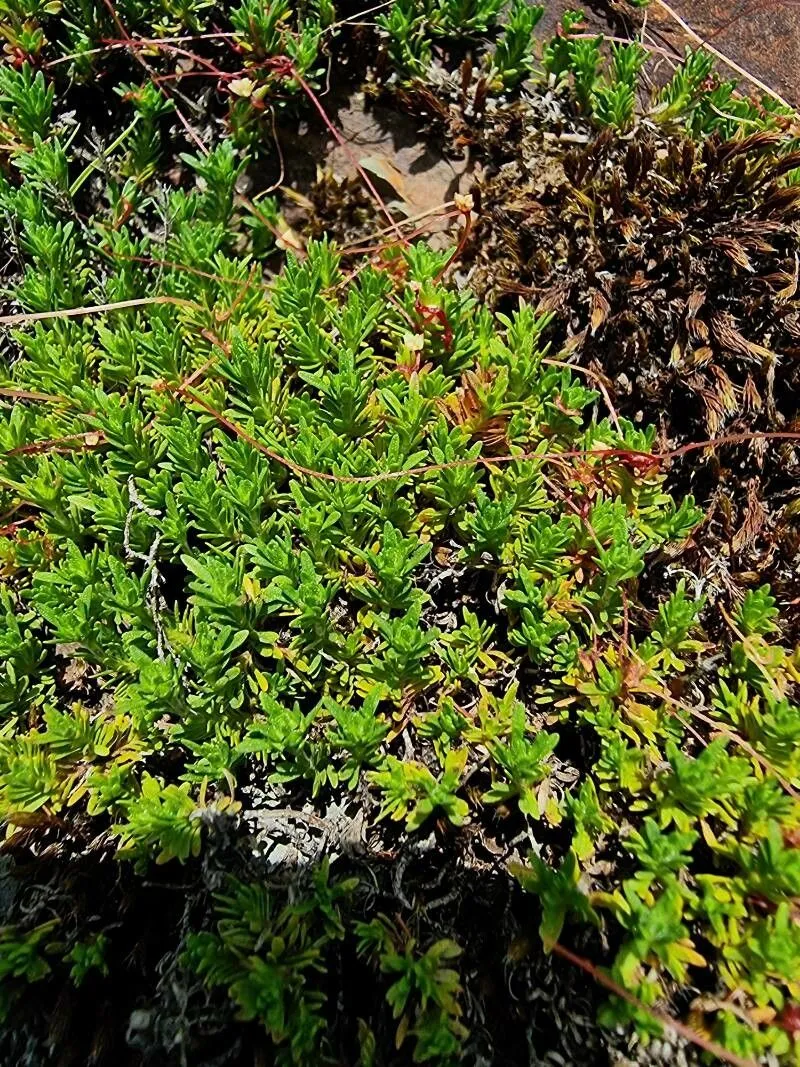
Author: Brot.
Bibliography: Fl. Lusit. 1: 176 (1804)
Year: 1804
Status: accepted
Rank: species
Genus: Thymus
Vegetable: False
Observations: Macaronesia, Portugal to NW. & W. Spain
Azores thyme (Thymus caespititius) is an aromatic, low-growing perennial plant renowned for its remarkable adaptability and hardy nature. It belongs to the family Lamiaceae, a group of flowering plants that include many well-known herbs and ornamental species.
This robust thyme species is native to the unique ecological regions of Macaronesia, which encompasses the Azores, Madeira, and the Canary Islands, as well as parts of Portugal and Northwestern to Western Spain. It thrives in these diverse environments, often found clinging to rocky terrains and open landscapes, where it forms dense, cushion-like mats of lush, green foliage. The plant’s resilience in such harsh, windswept habitats speaks to its toughness and ability to withstand challenging conditions.
Azores thyme is distinguished by its small, aromatic leaves and beautiful clusters of tiny, tubular flowers that bloom in shades of pink, purple, or lavender. These blossoms not only add a splash of color to the landscape but also attract pollinators, such as bees, making Thymus caespititius an important species for maintaining local biodiversity.
First documented in 1804 in “Flora Lusitanica” (Fl. Lusit. 1: 176), by the botanist Brot., Azores thyme has been recognized for its aesthetic and ecological value. Over the years, it has been studied for various purposes, including its potential use in traditional medicine, culinary applications, and as a ground cover in garden landscapes due to its fragrant foliage and minimal maintenance requirements.
Moreover, its presence in these regions highlights the rich botanical diversity of the Western European and Macaronesian flora. The adaptation strategies and ecological significance of Thymus caespititius underscore its role in preserving the natural heritage of these areas.
In summary, Azores thyme is a versatile and charming plant that not only beautifies and scents its natural habitat but also plays a vital role in supporting the ecosystem. Its enduring popularity is a testament to its aesthetic appeal and the profound connection it maintains with the regions it inhabits.
Eng: azores thyme
Swe: kryptimjan
Por: thymus
En: Azores thyme
Et: Portugali liivatee
De: Schillernder Thymian
Pt: Thymus
Sv: Kryptimjan
Taken Jul 17, 2022 by Jerome Sudre (cc-by-sa)
Taken Jul 20, 2022 by 30blueQuarks (cc-by-sa)
Taken Jul 14, 2022 by François Garnotel (cc-by-sa)
Taken Jun 15, 2022 by Rosana Correia (cc-by-sa)
Taken Jul 1, 2020 by Fernanda Millan (cc-by-sa)
Taken Apr 30, 2022 by Daniel Bourget (cc-by-sa)
Taken Apr 30, 2022 by Daniel Bourget (cc-by-sa)
Taken Jul 15, 2021 by Pereira Jorge (cc-by-sa)
Taken Aug 15, 2020 by Verónica Rodríguez Vicente (cc-by-sa)
Taken Jul 14, 2022 by François Garnotel (cc-by-sa)
Taken Apr 30, 2022 by Daniel Bourget (cc-by-sa)
Taken Jul 9, 2022 by Szabolcs Frater (cc-by-sa)
Taken Jul 20, 2022 by 30blueQuarks (cc-by-sa)
Taken Feb 15, 2011 by Photoflora – Benoit BOCK (©)
Taken Feb 15, 2011 by Photoflora – Benoit BOCK (©)
Family: Myrtaceae Author: (F.Muell.) K.D.Hill & L.A.S.Johnson Bibliography: Telopea 6: 402 (1995) Year: 1995 Status:…
Family: Rubiaceae Author: Pierre ex A.Froehner Bibliography: Notizbl. Bot. Gart. Berlin-Dahlem 1: 237 (1897) Year:…
Family: Sapindaceae Author: Koidz. Bibliography: J. Coll. Sci. Imp. Univ. Tokyo 32(1): 38 (1911) Year:…
Family: Asteraceae Author: A.Gray Bibliography: Pacif. Railr. Rep.: 107 (1857) Year: 1857 Status: accepted Rank:…
Family: Fabaceae Author: Medik. Bibliography: Vorles. Churpfälz. Phys.-Ökon. Ges. 2: 398 (1787) Year: 1787 Status:…
Family: Aspleniaceae Author: (Cav.) Alston Bibliography: Bull. Misc. Inform. Kew 1932: 309 (1932) Year: 1932…